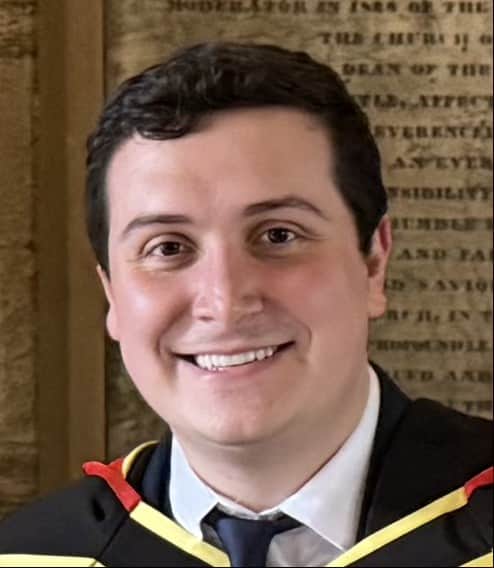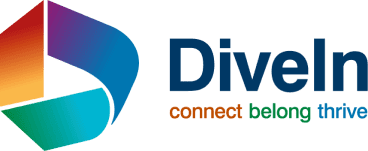Lukas Gabriel Moers he/him

Doctoral researcher in Computing Science
Strategic Research Areas
My research interests lie in the development of digital health technologies, more specifically focused for healthy aging. During my PhD I hope to design, develop and implement a digital twin for fall rehabilitation, with the aim to allow older adults to monitor their mobility, predict changes in their mobility, and improve their mobility with personalised physiotherapy exercises based on their health.
DiveIn’s focus on mission-driven and interdisciplinary research is important to me because it reflects my own values of collaboration and inclusivity in research. It allows me to combine my experience in the healthcare sector with my background in computer science to research digital health technologies that can make a meaningful impact in people’s lives. Working alongside diverse, multidisciplinary researchers inspires and allows me to approach problems from multiple different perspectives and create more meaningful, human-centered solutions.
In my downtime, you can find me playing survival, mmorpg or board games, rewatching older TV shows, or catching up with friends.
Digital Twin Individualization for Fall Rehabilitation in Older Adults
Recent research has increasingly explored the potential and future concepts of digital twin (DT) technologies within healthcare settings [1, 2, 3, 4]. However, the development, implementation, and real world testing of such technologies is still in its early stages. Current research primarily investigates DT for organs (lungs [5] and heart [6, 7, 8]) and diseases [9, 10], leaving a significant gap, and open opportunity, for research into preventive digital twins technologies aimed at promoting autonomy and self-care.
Falls are the current leading cause of injury related death among older adults aged over 65 years old, costing the NHS more than £2.3 billion annually [11]. In the United Kingdom, 30% of people over 65 years old, and 50% above 80 years old, experience one fall at least once a year [12], with half of those who fall likely to experience another fall another fall in the same year [14].
According to the latest United Kingdom Census of 2021 [13], there are approximately 11 million people aged 65 years old and 3.2 million aged 80 and over, living in the United Kingdom. Based on these figures, an estimated 2.6 million people over 65 years old and 1.6 million people over 80 years old are expected to experience at least one fall annually. These numbers are projected to drastically increase by 2035 due to the ongoing growth of the ageing population [15].
Traditional fall prevention and rehabilitation programmes for older adults consist of balance and strength exercises [16] which are conducted either with the supervision of a physiotherapist or independently. The current and prospective statistics highlight the need for new alternatives to improve not only fall rehabilitation but also the overall mobility of older adults. In my PhD I aim to co-design, develop and implement a digital twin system that will allow older adults to autonomously monitor their mobility, predict changes in their mobility based on their current health data and state, and improve their mobility by delivering personalised physiotherapy exercises based on their current health.
References
[1] Katsoulakis, E., Wang, Q., Wu, H. et al. Digital twins for health: a scoping review. npj Digit. Med. 7, 77 (2024). https://doi.org/10.1038/s41746-024-01073-0
[2] Zhang, K., Zhou, H.-Y., Baptista-Hon, D. T., Gao, Y., Liu, X., Oermann, E., Xu, S., Jin, S., Zhang, J., Sun, Z., Yin, Y., Razmi, R. M., Loupy, A., Beck, S., Qu, J., & Wu, J. (2024). Concepts and applications of digital twins in healthcare and medicine. Patterns, 5(8), 101028. https://doi.org/10.1016/j.patter.2024.101028
[3] Volkov, I., Radchenko, G. & Tchernykh, A. Digital Twins, Internet of Things and Mobile Medicine: A Review of Current Platforms to Support Smart Healthcare. Program Comput Soft 47, 578–590 (2021). https://doi.org/10.1134/S0361768821080284
[4] Okegbile, S. D., Cai, J., Niyato, D., & Yi, C. (2022). Human digital twin for personalized healthcare: Vision, architecture and future directions. IEEE network, 37(2), 262-269.
[5] Lexma. Project Breath Easy Lexma Digital Twin Lung, http://projectbreatheasy.org/ (2023).
[6] Baillargeon, B., Rebelo, N., Fox, D. D., Taylor, R. L. & Kuhl, E. The Living Heart Project: A robust and integrative simulator for human heart function. Eur. J. Mech. A Solids 48, 38–47 (2014).
[7] Healthineers, S. The Value of Digital Twin Technology, https://www.siemens-healthineers.com/en-us/services/valuepartnerships/ asset-center/white-papers-articles/value-of-digitaltwin- technology.
[8] Obaid, D. R., Smith, D., Gilbert, M., Ashraf, S. & Chase, A. Computer simulated “Virtual TAVR” to guide TAVR in the presence of a previous Starr-Edwards mitral prosthesis. J. Cardiovasc. Comput. Tomogr. 13, 38–40 (2019).
[9] Fisher, C. K. et al. Machine learning for comprehensive forecasting of Alzheimer’s Disease progression. Sci. Rep. 9, 13622 (2019).
[10] Badano, A. et al. Evaluation of Digital Breast Tomosynthesis as Replacement of Full-Field Digital Mammography Using an In Silico Imaging Trial. JAMA Netw. Open 1, e185474 (2018).
[11]UK Research and Innovation. (2024, March 13). Home interventions reduce fall admissions for older people.https://www.ukri.org/who-we-are/how-we-are-doing/research-outcomes-and-impact/mrc/home-interventions-reduce-fall-admissions-for-older-people/
[12]Office for Health Improvement and Disparities. (2022, February 25). Falls: Applying All Our Health. GOV.UK. https://www.gov.uk/government/publications/falls-applying-all-our-health/falls-applying-all-our-health
[13] Office for National Statistics. (2025, June 27). Census-based statistics UK: 2021 – March 2021 UK estimates for a range of census topics. https://www.ons.gov.uk/peoplepopulationandcommunity/populationandmigration/populationestimates/datasets/censusbasedstatisticsuk2021
[14] Bedford Borough Council. (n.d.). Ageing Well: Falls and osteoporosis. https://www.bedford.gov.uk/files/ageingwell-fallsandosteoporosis.pdf/download?inline bedford.gov.uk
[15] Institute of Public Care, Oxford Brookes University. (n.d.). POPPI – Projecting Older People Population Information System. Retrieved 01/11/2025 , from https://www.poppi.org.uk/
[16] Vaishya R, Vaish A. Falls in Older Adults are Serious. Indian J Orthop. 2020 Jan 24;54(1):69-74. doi: 10.1007/s43465-019-00037-x. PMID: 32257019; PMCID: PMC7093636.
I am happy to collaborate with any academics or industrial partners that are interested in developing digital technologies for healthcare. Additionally, I have experience with development with smartwatches, mobile applications, web applications, and prototyping with Edison Arduino and Raspberry Pi.
